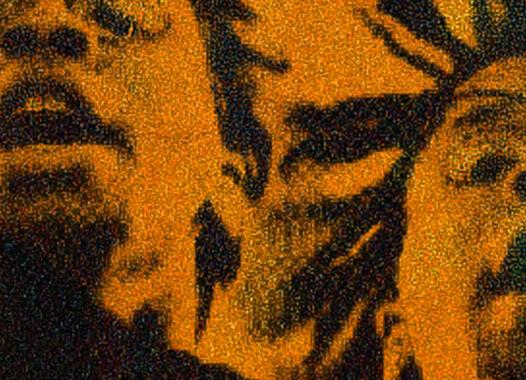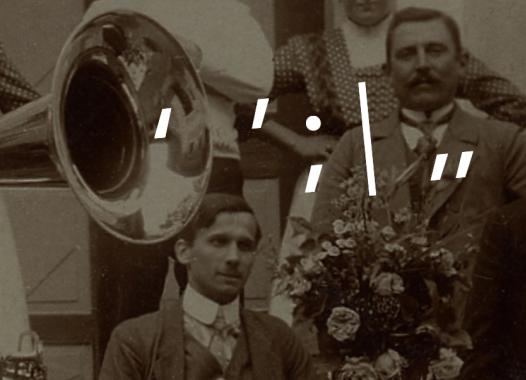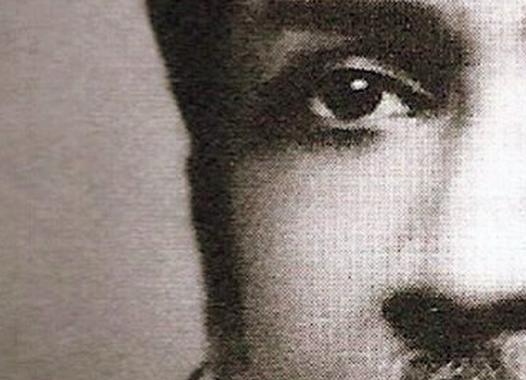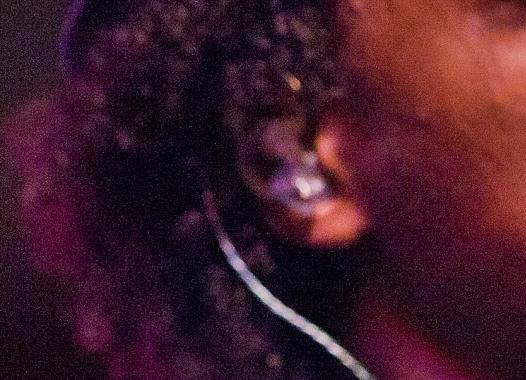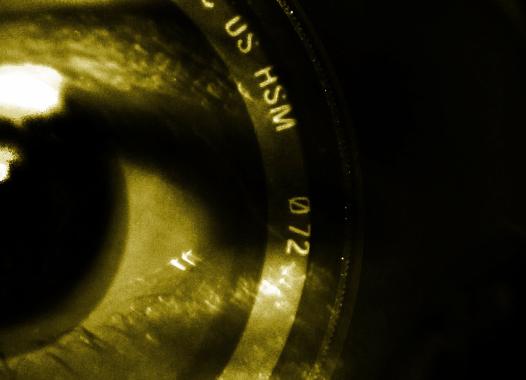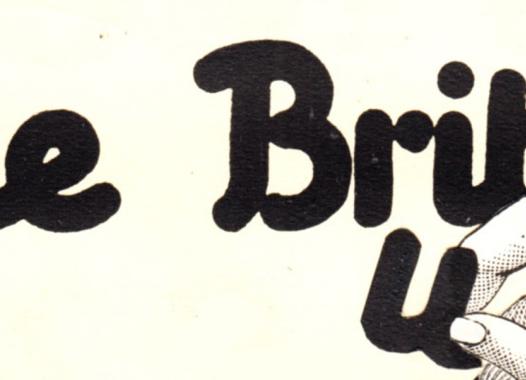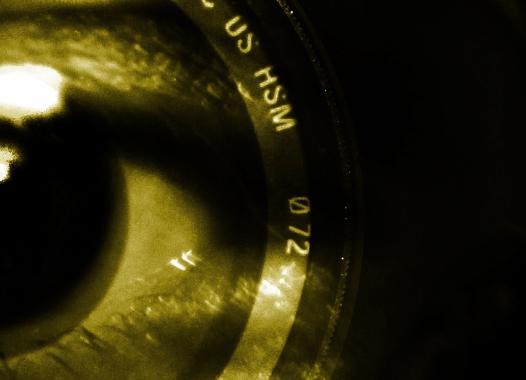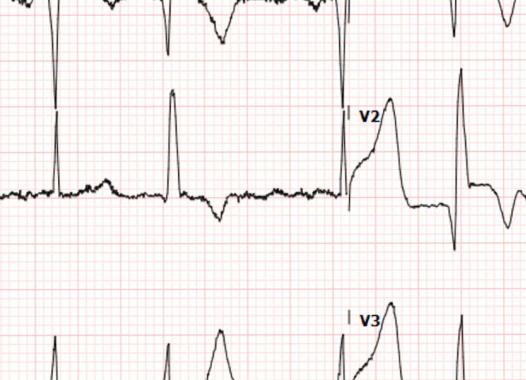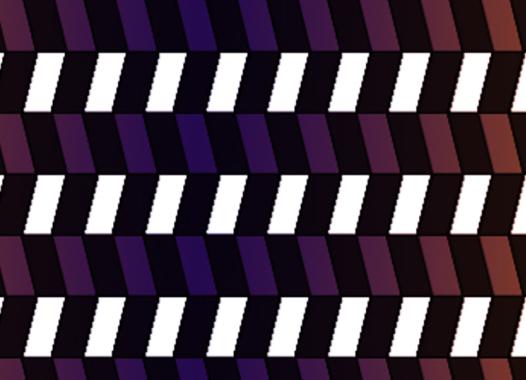
A Rift in English Prosody
In 1959 W. K. Wimsatt, Jr., and Monroe C. Beardsley published “The Concept of Meter: An Exercise in Abstraction,” an essay that summarized and crystallized an influential approach to poetic form.[1] As the authors insisted, their essay offered little new but presented common wisdom that had become obscured or forgotten and needed restatement. Yet their clarity, succinctness, and wit made it arguably the high-water mark of New Critical approaches to meter and one of the most important metrical statements of the twentieth century. It continues to be a point of reference and departure.
The collaboration of a literary critic (Wimsatt) and a philosopher (Beardsley) resulted naturally enough in two main strands of argument reflecting their disciplines, although it is clear that the authors shared literary and philosophical ideas. As for the literary, their taxonomy of the history of English poetic form is a wonderfully clear description of the two main traditions of English prosody. The first comprises the old “strong-stress” medieval meters (Beowulf and Piers Plowman), aspects of which have been sporadically revived, especially in the nineteenth and twentieth centuries. The second comprises the “syllable-stress” meters (especially iambic pentameters and tetrameters from Chaucer to the present). Pedagogically, the taxonomy works neatly in surveys of British and American poetry even as its historical and theoretical ideas have been rejected and superseded.[2]
For most of what follows, our concern will be broadly ontological. On this matter, Wimsatt and Beardsley had two points of departure. They took issue with structural linguistics for not being abstract enough when discussing poetic meter, and with “temporal” (including “musical”) approaches for imposing a score extraneous to the text. What all these methods had in common, according to Wimsatt and Beardsley, was attention to an individual performance that might be plausible but was something different from the enduring text from which other performances might derive; hence their title, “an exercise in abstraction.”
They saw linguistic approaches as hugging the phonetic ground too closely, not stepping back to take advantage of categories in meter analogous to the concept of the phoneme in the flourishing phonology of the time. (The phoneme as used by linguists cited in the essay—Harold Whitehall, Seymour Chatman, George L. Trager, Henry Lee Smith—is an abstraction that ignores the differences in the pronunciation of, for example, a consonant like /p/ to capture the features that distinguish /p/ from /t/, etc. So should a metrical description, said Wimsatt and Beardsley, have a level of abstraction that systematically ignores certain differences in, for example, the degree of stress on stressed syllables.) As it turned out, one of their two main targets, Seymour Chatman, showed to everyone’s satisfaction that he was as abstract as Wimsatt and Beardsley, and seven years later with the founding of generative metrics by Morris Halle and Samuel Jay Keyser, no one complained about a lack of abstraction in linguistic prosody. Halle and Keyser did not begin with the familiar syllable but with the “position,” ten positions to the line in iambic pentameter, to be filled by one syllable, two syllables, or no syllable according to a set of rules that mapped syllables of various degrees of stress onto the positions. In the years since, revisions and modifications have been offered by Paul Kiparsky, Gilbert Youmans, Bruce Hayes, Kristin Hanson, and many others.
Despite different assumptions between linguistic theory and Wimsatt and Beardsley’s theory, the approaches have a crucial element in common: the priority given to linguistic stress over linguistic timing—often to the complete exclusion of linguistic timing. Collectively, these prosodists are called “stressers.” By contrast, prosodists who emphasize either temporal or musical elements, or both, are known as “timers.” Wimsatt and Beardsley’s essay illustrated what was once again a central rift in English prosody of the past two centuries, between timers and stressers.
T. V. F. Brogan has a clarifying chart that traces the different branches of these schools of metrics in his monumental English Versification, 1570-1980.[3] Wimsatt and Beardsley are on the branch of “traditional stress metrics” while Chatman, Halle, Keyser and other structural and generative metrists are on the nearby branch of “linguistic stress metrics.” For all of these, relative stress is the key—greater stress on one syllable than on an adjacent syllable. In iambic verse, by the traditional view, it is greater stress of whatever degree on the second syllable of the foot. The various branches of temporal metrics are on the far side of the page, the split in the family tree having occurred centuries earlier.
One problem was that not everyone heard relative stress the way Wimsatt and Beardsley did, and so it seemed that stressers were imposing an individual performance, in contradiction of the principles they espoused. A key to the difference in perception is the idea of the “beat,” which timers invoke by analogy with the beat in measured music but which stressers generally disregard, dismiss, or conflate with linguistic stress. If we say, as timers do, that a beat can be perceived without a corresponding stress, we are putting the poem into a perceiving consciousness, something different from the enduring, unincarnated text imagined by Wimsatt and Beardsley, by New Critics generally, and by generative metrists.
Here we come to the question of what is added by consciousness in the act of reading a poem—or, more precisely, the various additions of various consciousnesses. A dictionary marks word stress. If that were all that is needed, the dictionary could be mechanically superimposed on the written text of the poem, along with a full theory of phonology aimed at describing the phrasal stress, emphatic stress, and so on, of ordinary talk. However, a long tradition of commentary going back to Wordsworth and Coleridge holds that the performance of a poem in metrical form will often have features that diverge from the features of simple conversation—a “metrical pause” within the line, for example.
Modern developments of this idea in the temporal tradition argue that without a realization and instantiation of those features, a line of poetry is incomplete. Among those who have taken this view over the past century and longer, it is impressive how much agreement there is on the specific metrical patterns that count. This reasoning can be carried to its logical conclusion in the spirit of Jorge Luis Borges on Pierre Menard:[4] identical sequences of words, written or oral, may become different lines of poetry among different readers, because a line is more than the sequence of syllables. Certain kinds of pauses are a structural part of the line, as much as any syllable. One reader may produce a version of the sequence of words that is complete (by the lights of temporal metrists); another reader of the same sequence of words may produce a line that is a fragment (because it lacks a non-syllabic structural element). These different versions, then, should not be called different “performances” of the same line but different “lines.”
From these epistemological problems of perception and knowledge, difficult ontological questions arise, and they vex our understanding of both the production and reception of the poem. In New Criticism generally, and certainly in the metrics of that school, the words on the page counted for more than presumptions about either the author or the performer. The receiver was even further removed from flesh-and-blood humans—a vague, generalized construct without an anatomy to frame the doors of perception.
Even today, little experimental work has been done on the perception of poetry. However, increasingly sophisticated studies have been carried out during the past ten years on the perception of music, making use of new technology and revisiting old problems in phenomenology. The link between music and poetry in prosodical scholarship has long been a part of the temporal tradition. From an armchair perspective it might seem that technological advances in the neurosciences should not change the basic questions in poetics even if there are analogies with music: we’ve only got better instruments, one might say. However, the better instruments in the lab have necessitated a progressive refinement of assumptions, research strategies, and indeed basic questions about the perception of music. There are direct implications for the language of poetry.
It may clarify the exposition to anticipate two main points this essay will make: (1) it will downgrade the importance of the line for all periods of English poetry in favor of what is proposed as a metrically prior principle—a beat that continues whether line structure is present or not; and (2) it will invoke a rhythmical analogy from Baroque music to illustrate that principle and then link both the analogy and the principle to recent work in cognitive science. To illustrate the question of the line and the syllables it comprises, we will begin with the notebooks of Percy Bysshe Shelley.
Shelley’s Stand-ins for Syllables and Beats
Shelley’s brief lyric “A Lament” was worked out in three stages of a first draft, which appear to be separated by a period of months in a notebook now in the Huntington Library. This much of the process of composition was described in a 1932 essay by Bennett Weaver.[5] Shelley then resumed work and finished it—or nearly finished it—in a notebook now in the Bodleian Library, Oxford. The completed lyric was published by Mary Shelley in 1824:
A Lament
O world! O life! O time!
On whose last steps I climb,
Trembling at that where I had stood before;
When will return the glory of your prime?
No more—oh, never more!
Out of the day and night
A joy has taken flight;
Fresh spring, and summer, and winter hoar,
Move my faint heart with grief, but with delight
No more—oh, never more!
In the Huntington notebook, the first two stages of the first draft contain a mix of English words (life, death, time, etc.) and nonce syllables (ni, nal, na, etc.). Weaver makes three comments that are especially interesting for our purposes. Of the first stage of the first draft he writes: “Whether the words came in response to the rhythm or whether the rhythm was determined by the words who can say? It is a fact, of course, that the words precede the symbols of the rhythm; and consequently we might assume that some idea associated with the words began to throb in Shelley’s mind and to take on measured motion.”[6] To be sure, the words barely precede the “symbols,” by which Bennett means the nonce syllables, na, ni, and so on with their diacritics. The very first line is “Ah time, oh night, oh day,” and then the symbols are up and running for the next two lines: “Ni nal ni na, na ni<TH>/<TH>Ni na ni na, ni na.” It is as though some rhythmic impulse in the poet alighted on a handful of English words, then lost its argument, and resorted to nonce syllables as placeholders.
The third stage is interesting for recording only the iterated syllable na (and once a) through eleven lines varying from two to nine syllables with sporadic diacritics of accent, breve, macron, and circumflex; for example, the first stanza:
Na na, na na ná na
Nă nă na na na—nă nă
Nă nă nă nă nā nā
Na na nă nă nâ ă na
These rhythmical notations are followed by a draft of ten lines with actual words, which are closer to the nonce syllables than the final poem is; they are still a poem in progress.
Weaver says: “I would now assume that these symbols suggest a certain insistent rhythm and that the words on the opposite page are the result of an attempt to give this beating pulse a body in which to live.”[7] A brief response is that the beating pulse already had a body in which to live—Shelley’s. Shelley was looking for a way to externalize it in English words, convey it to others, and replicate it in their bodies.
Finally, Weaver notes that between the two versions of the third stage, four of the ten lines of English words have different numbers of syllables than the corresponding nonce lines, five lines follow the count, and one line is uncertain because of three syllables crossed out; in addition, “The most perplexing difference between the symbols and the words lies in the fact that there are eleven lines of the one and only ten of the other. . . .”[8]
The explanation that suggests itself is that the final number and length of lines—whether measured in syllables or beats—come late in the process of a lyric such as this. After the fact, we speak of “iambic pentameter,” “iambic tetrameter,” and so on. These are the primary categories of the classifying metrist, and by common sense the place to start. However, there is something more basic, something, as we will see in the next section, akin to a “walking bass” in music.
Mary Shelley and subsequent editors ignored Shelley’s indication of a missing foot in line 8—a space between “summer” and “&.” She closed up the space and printed line 8 with nine syllables instead of ten.[9] There is a way of reading the line as an iambic pentameter—with a silent beat, a “virtual beat”—between “summer” and “and.” However, this would be an extremely complex reading, especially because not all the lines of the stanza are iambic pentameter. The fascinating question that presents itself is whether it would be closer to Shelley’s intention (1) to posit a silent beat in the text as printed; or (2) to insert one of the words that he wrote in an earlier draft but did not keep in the fair draft; or (3) to retain the space itself.[10] Because silent beats in such contexts do not occur elsewhere in Shelley’s poetry, the second or third solution would arguably be closer to Shelley’s intention, which would be a line of five beats, as in the corresponding third line of the previous stanza.
The point is that silent beats are as salient as any syllable. Empirically, we can determine that there are contexts where silent beats, though possible, would be unlikely, as in the line by Shelley. In other contexts they are as expected and as real as footsteps in walking. We will turn now to walking as a metaphor for much that has been said, especially about beats in poetry. However, as the essay proceeds, a more literal connection between beats and walking will emerge.
The Walking Bass
Bach’s Feet: The Organ Pedals in European Culture is the title of a recent book by David Yearsley on rhythm in Baroque music and the instantiation of rhythm in bodily activity such as the movement of feet, whether on the pedals of the organ or on the road in walking. The book contains photographs of large-buckled shoes from the seventeenth and eighteenth centuries, which serve as a kind of metonymy for the “feet” of the title. “Feet,” of course, show up in discussions of meter (foot: “Prosody . . . The term is commonly taken to refer to the movement of the foot in beating time”—OED). In addition to being an incomparable composer, Bach was a great organist and a great walker. From his youth he walked to other towns to hear famous organists. Once while employed as an organist at Arnstadt, he obtained a leave of a few weeks to go to Lübeck and hear Dieterich Buxtehude, the organist of St. Mary’s Church. The journey on foot of 250 miles to Lübeck and the same distance back exceeded by three months the leave that his employers had granted—to their consternation—although Bach managed to keep his position.[11] Yearsley says this about the “walking bass” as manifested on the organ and on the land:
In the idiom of pedal-playing, the feet progress as if they are walking. They alternate left and right, moving through their music in much the same way that they move through life. Nearly ubiquitous in the seventeenth and eighteenth centuries, this peripatetic musical figure remains the standard to this day. At the organ, the “walking bass” operates at both the literal and metaphorical level: organists’ feet walk or run over the pedalboard, one foot and then the other, mimicking ambulatory motion in the act of conveying a musical sense of distance covered.[12]
An example of the walking bass is a familiar staple at weddings, Bach’s “Air from Orchestral Suite No. 3 in D. Major.”[13] Whether played on the organ or as arranged for violin and piano (often referred to as “Air on the G String”), the steps of the bass are as salient and as stately as the beats of iambic pentameter in a Shakespeare sonnet.[14]
The walking bass, in its metronomic regularity, establishes the meter. Between the steps of the bass, rhythmic figures give variety. Something similar happens in the walking bass of jazz.[15] As succinctly stated by Justin London: “Meter functions as a ground for rhythmic figures.”[16] This idea will be developed as we proceed. First, however, let us consider the segmentation of linear units, as in the lines that Shelley heard.
Permeable Boundaries: Continua vs. Discrete Categories
Most of the examples of lines of poetry in this essay are offered to call into question the priority that has been given to a consistent count per line in English poetry—whether a count of syllables, beats, or feet. This is not to deny that the consistent counts are there. The iambic pentameter can be said, conventionally, to have ten syllables, five beats, and five feet (or whichever of these concepts a particular theory allows). What is called into question is whether the count per line is the ground for an understanding of meter and rhythm. What is basic and what is derived? Does the very term “iambic pentameter” close off an understanding of patterns that are prior to a division into lines?
Consider these lines from two poems by Swinburne, the first in hexameter, the second in trimeter:[17]
Thou art more than the day or the morrow, the seasons that laugh or that weep;
For these give joy and sorrow; but thou, Proserpina, sleep.
(Hymn to Proserpine 3-4)
And froth and drift of the sea;
And dust of the labouring earth;
And bodies of things to be
In the houses of death and of birth.
(Atalanta in Calydon 330-33)
In the 48 lines of this Chorus from Atalanta in Calydon most of the odd-numbered lines could be combined with the following line into one long line and popped into Hymn to Proserpine with no disruption—at least no disruption in the meter, which in its variable combinations of duple and triple rhythms has been called mixed meter, iambic-anapestic meter, loose iambic, dolnik, strict stress-meter, and logaoedic. Derek Attridge’s notation shows this mix. The B represents a “beat,” the o an “offbeat,” and the -o- a “double offbeat.” By Attridge’s view, and by the view assumed here, the B aligns with a syllable on which tapping naturally occurs—whether the tapping of a finger, a pencil, a foot, a piece of chalk, or any other external time marker.[18] As will be argued, this tapping is more than an incidental accompaniment to a silent or oral reading of a poem.
For these give joy and sorrow; but thou, Proserpina, sleep . . .
o B o B o B -o- B o B -o- B
And froth and drift of the sea; and dust of the labouring earth;
o B o B -o- B o B -o- B -o- B
The conflation of lines from the two poems may disrupt the sense, though there are those, including W. B. Yeats, who say that Swinburne in his most impressive flights of sound has already taken leave of sense.
If the line division of some nineteenth-century poetry is ambiguous when taken in by the ear, there are metrically similar medieval poems that show the ambiguity in written form. Here are two lines from the Poema Morale, c. 1200, in a meter known as “septenary,” for the seven beats in each line that occur on syllables. Following Attridge’s notation, a “virtual beat” is indicated at the end of each line:
Ich am nu elder þan Ich wes a wintre and a lore
o B o B o b o B o B o b o B o [B]
Ich welde mare þan I dude mi wit oh to be more
o B o B o b o B o o B o b o B o [B]
(Trinity MS. 1-2)
And here are four lines by Samuel Taylor Coleridge:
It is an ancient Mariner
o b o B o B o b
And he stoppeth one of three.
-o- B o B o B [B]
“By thy long grey beard and glittering eye,
-o- B O B o B -o- B
Now wherefore stopp’st thou me?”
O B o B o B [B]
(The Rime of the Ancient Mariner 1-4)
Finally here are four lines by Emily Dickinson:
The Brain—is wider than the Sky—
o B o B o b o B
For—put them side by side—
o B o B o B [B]
The one the other will contain
o B o B o b o B
With ease—and You—beside—
o B o B o B [B]
(632)
Both the Coleridge and the Dickinson lines are in a form of ballad meter known as Common Measure: 4 3 4 3. However, if we follow Attridge’s description of a “4 x 4” structure, that is, four lines of four beats, a “virtual beat” occurs at the ends of lines 2 and 4.[19] Furthermore, if the two lines from Poema Morale were each broken into two lines, as they are sometimes printed, they would appear to be in Common Measure too:
Ich am nu elder þan Ich wes
o B o B o b o B
a wintre and a lore
o B o b o B o [B]
Ich welde mare þan I dude
o B o B o b o B o
mi wit oh to be more
o B o b o B o [B]
It is obvious why the septenary has long been proposed as a source for ballad meter.
But although Attridge’s supplement of [B] to represent a virtual beat is a step, literally, in the right direction, the division into four lines is still an abstraction from the continuous progression of beats in the brain: one can think of Bach’s walk to Lübeck, and even in our imaginary landscape, a walk along a road lined with posts spaced a stride apart.
In the eighth line of Shelley’s poem, a stride—a post, a virtual or silent beat—could conceivably occur between “summer” and “and”:
Fresh spring, and summer, and winter hoar,
O B o B o [B] o B o B
It would be analogous to the silent beat that has been posited in this line from Shakespeare’s Richard III:
But, tell me, is young George Stanley living?
o B o [B] o B O B o B o (5.5.9)
Or in many of the dipodic lines in George Meredith’s “Love in the Valley,” as in line 3:
Knees and tresses folded to slip and ripple idly
B o b o B o [b] o B o b o B o
Although a silent beat could theoretically occur between the two offbeats in Shelley’s line, the practice of the poets argues otherwise. The silent beat, in which a stressed syllable bearing ictus is missing, is rare in English poetry beyond the ballad stanza and dipodic verse. It occurs occasionally in poetry of the drama but seldom in lyric poetry, including that of Shelley, who worked more variations on the iambic pentameter than most of his contemporaries.
The argument of this essay has been moving toward a consideration of some kind of clock in the human mind, as illustrated first by Shelley’s nonce syllables as markers of rhythm existing before the actual words; and second by an analogy from Baroque music and jazz where the meter is counted out by a “walking bass.” The last part of the essay will look at studies in cognitive science that have confirmed this clock, and we will ask about its relevance to the structure of a poem in meter.
Double Offbeats and the Ripples of Rhythm
First though with the poems before us, it is worth noting that in Coleridge’s lines, but not in those of the other two poets, there are occurrences of the symbol -o-, as in the lines by Swinburne, indicating a “double offbeat”: And he, By thy, -ering-. These patterns of two unstressed syllables have been designated by other names—for example, “anapestic substitutions” when scanned with the following beat. George Saintsbury, Edward Weismiller, Marina Tarlinskaja, Kristin Hanson, and Derek Attridge are among the prosodists who have urged attention to this pattern as one of the most important ways of achieving rhythmical variety in English poetry from Coleridge to the present.
Tarlinskaja’s work is especially extensive and persuasive. An understanding of the variations in English metrical poetry during the past two centuries—and in much Middle English lyric poetry—must begin with the two metrically unstressed, homely syllables designated in the present study by -o-. They cause a distinct ripple in the tapping of the beats.
By this way of looking at it, the steady progression of posts along the roadside gives us the meter; the uneven surface between the posts is what we can call rhythm. If the ground between the posts were smooth, we would say that the meter and the rhythm of the language are in an isomorphic relationship. But the rhythm of English, like that of all natural languages, is filled with stony patches and potholes, gullies and small stumps.
Because of the disjunction between the melodies and rhythms that the poet hears and the sound patterns that the language offers, there is an inevitable tension along the ground separating the posts. In addition, the poet makes use of double offbeats and other “substitutions.” The inverted first foot, the so-called pyrrhics and spondees, the caesura, the unstressed syllable at the end of the line, and so on, these occur before, between, and after the tapped beats, the posts.
Cognitive Approaches to Language, Music, and Poetry
But this tapping, whether of the fingers or the foot, the walking—aren’t these manifestations of human behavior to the side of the poem itself, something the poem may or may not cause? Wimsatt and Beardsley had a very clear notion of the distinction between the poem and its accidentals:
When we ask what the meter of a poem is, we are not asking how Robert Frost or Professor X reads the poem, with all the features peculiar to that performance. We are asking about the poem as a public linguistic object, something that can be examined by various persons, studied, disputed—univocally.[20]
By Wimsatt and Beardsley’s view, the poem may evoke certain responses in some sophisticated readers but not in others. In replying to criticisms of their essay, they claimed not to hear “the element of ‘ideal’ temporally equal recurrence” that Elias Schwartz heard and which they said is “neither a part of objective linguistics nor of observable phonetic phenomena. This seems to place it safely beyond verifiable public discussion, where we have no wish to follow.”[21]
In the decades since their essay, and especially during the past twenty years, the intersection of traditional phenomenology and cognitive science has done much to illuminate the private areas of consciousness, including the perception of rhythm, which Wimsatt and Beardsley showed little interest in. It has also called into question whether there is even such a thing as a “poem as a public linguistic object” in the way they meant.
Yet the specific, potential contributions of cognitive science have been more fully understood and applied to analogous problems in music than in poetics. Much current work in perception and music shows not only what is happening in the head but also how that neuronal activity connects to the movements of hands and feet that have been observed since the ancient Greeks and before.[22]
Little of this has made it into discussions of poetic meter. For example, for the link between music and poetry via cognitive poetics, Derek Attridge’s otherwise exemplary entry for “Rhythm” in the fourth edition of The Princeton Encyclopedia of Poetry and Poetics cites only a handful of older studies, including groundbreaking work going back to the 1970s by Reuven Tsur, but nothing recent by psychologists and neuroscientists; nor does the entry on “Cognitive Poetics” by Tsur himself and T. Sovran.[23] (There is only so much one can do in an encyclopedia entry.) By far the fullest and most searching application of current work in music and the neurosciences to the rhythms of poetry is the 2012 dissertation by Nicholas Myklebust.[24]
One way of restating the problem—and suggesting a solution—is to ask exactly what it is that temporal metrists of a long tradition have perceived—this “beat” that is always referred to—and how it is perceived. To have some idea of what is processed by those who say they feel such a mental event will possibly help explain what is processed by those who say they do not.
First of all, it is important to ask whether the beat itself has any temporal duration. Music theorists have made the point that a specific kind of note is perceived only after it has been performed; a staccato note, for example, is known as such only after the fact.[25] During the moment of perception, when the note is present, there is no way of knowing how long it will extend (unless, of course, one knows the piece of music, and even then, performers offer various interpretations). The length of a legato note, similarly, will be known only when the note ends. Thus, there is a problem in understanding the perception of a “present” event, because it is fully perceived only when it is no longer present.
William James pondered this paradox and invoked a term from the psychologist E. R. Clay’s work of 1882, “the specious present.” James’ elaboration of the idea influenced subsequent thinking, including that of Edmund Husserl. By James’ view, present moments cannot be discrete entities like beads on a string, or there would be no sense of continuity. The “present” had to include both a reflection of the past and a projection into the future:
In short, the practically cognized present is no knife-edge, but a saddle-back, with a certain breadth of its own on which we sit perched, and from which we look in two directions into time. The unit of composition of our perception of time is a duration, with a bow and a stern, as it were—a rearward- and a forward-looking end. . . . It is only as parts of this duration-block that the relation of succession of one end to the other is perceived.[26]
Interestingly for our purposes, James invokes the perception of various meters in poetry and melodies in music. He posits two stanzas of poetry in which a line in one stanza is of different length than the corresponding line in the other. James’ hypothetical example captures the problem that we considered above for Shelley’s two stanzas.[27] Because of stanza and rhyme structure, the line in the second stanza that was shortened by closing up the space is heard as shorter.
The perception of a melody was, in fact, Husserl’s favorite example. According to Husserl a melody is not heard a note at a time, because then there were would be no continuity.[28] Yet, the perceptual moment is also not a block of temporal duration as James had proposed. Instead, it is perceived with a memory of the notes that have preceded and a projection of the notes to come. Husserl’s three phases of perception, retention (short-term memory) and protention (anticipation) moved the object of study from the outside world to the interior of the mind, the locus of phenomenology.
If these ideas are transposed to literary meter, it should be clear that Husserl’s assumptions and conclusions opposed a view such as that advocated by Wimsatt and Beardsley and a long line of “objective” metrists. The beats of the line of verse are not in the acoustic stream, much less on the page, but in embodied consciousness, and that is a matter of an individual’s cognition. Yet aspects of Husserl’s theory left nagging questions that were picked up by Maurice Merleau-Ponty and a tradition of phenomenologists to the present.[29] These investigations have direct relevance for metrics.
For example, Hubert L. Dreyfus points out that Husserl’s system, though located within the mind, is oriented more toward the analysis of perception than toward perception itself; similarly, Shaun Gallagher points to Husserl’s reification of the categories involving the temporal “phase.” As Gallagher puts it, Husserl “tends to reify or hypostasize the phase and to treat it as something that is actually ‘for itself’ in consciousness.”[30] A process often referred to in current work is “proprioception,” the reception of stimuli produced within the body so as to register in the central nervous system the body’s own limb position in space. This is different from the mind’s conceptualization of such stimuli. It is sometimes argued that Husserl’s phenomena are mediated by conception, contrary to the basic assumptions of phenomenology.
In addressing this problem, Merleau-Ponty’s emphasis on perception within the body has been a frequent source of reference for philosophers of “embodied cognition.”[31] Here is a promising nexus where the speculations of philosophers intersect with the empirical findings of current neuroscience. One recent team of researchers, McAuley, Henry, and Tkatch, summarize their results in a publication of 2012:
Increasing evidence shows that neural circuits involved in beat perception overlap with motor circuitry even in the absence of overt movement. The study investigated effects of tempo on beat-based processing by combining functional magnetic resonance imaging with a perceptual timing paradigm where participants made simple temporal judgments about short rhythmic sequences.[32]
They found that accuracy in the perception of beats varied with the tempo of the beats, less so at a slower tempo of 1,500 milliseconds than at a faster tempo of 600 ms. To recite “Gather ye rosebuds while ye may” at the rate of a beat every thirty seconds would not only destroy the beats, it would destroy the poem. This is not an aesthetic statement but an ontological statement: the sequence of words would be something other than a poem. Such dissolution would continue to happen, of course, at tempi incrementally faster than the absurd rate of a syllable per half minute. The beats of music and poetry occur within a narrow range in the ecology of human perception. The poem exists, then, in a certain band of time.
Some psychologists would say that what happens in the brain is “self-entrainment.”[33] A mental clock becomes attuned to the meter of a piece of music or a poem. Merleau-Ponty had referred to it as “temps du corps, temps-taximètre du schéma corporel” (time of the body, taxi meter time of the corporeal schema).[34] Here is attestation of the interior clock that we feel when reading Emily Dickinson—or any other accomplished poet writing in meter. The main thesis that this essay offers is that the range within which the meters of poetry and music are perceived is quite narrow relative to the whole range of human rhythmic perception. It is analogous to the range of a wind-up metronome of wood and metal. The same kind of clock works for Dickinson’s Common Measure, Milton’s and Shakespeare’s iambic pentameter, Byron’s and Keats’ ottava rima, Longfellow’s trochaic tetrameter, Tennyson’s and Swinburne’s mixed meter hexameter, and so on.
But if the clock is always ticking at more or less the same tempo, and if the theory collapses the beats of all meters into a single progression of beats, what useful distinction can it possibly make? The answer is that it distinguishes the tempo of the entrainment of poetry from that of a slowly dripping faucet, or a jackhammer on the street. McAuley, Henry, and Tkach found perception of beats to be strongest, “around 100-120 beats per minute, which corresponds to a beat period between 500 ms and 600 milliseconds.”[35] This is more or less the range within which beats in poetry have always been found to occur whenever empirical studies have been made, going back to William James’ citation of evidence from nineteenth-century German psychologists, Ana Snell’s often cited study of 1918, on up to Frederick Turner and Ernst Pöppel in 1983, and Nicholas Myklebust’s own timing.[36]
Measurements by the clock, however, are more apt to be irrelevant, or even misleading, than helpful. Except for gross distinctions—comparisons of linguistic or musical periodicities with the periodicities of dripping faucets or jackhammers—the external clock really doesn’t matter. Human cognition must deal with widely varying tempi as we bump about in the world, but the tempo of poetry and music, in relative terms, is more or less constant. For both forms it is within a fairly narrow band, and that is mainly what needs to be said.
More interesting than the measurements of the simple timing of beats is the response by neurons to the patterns of rhythmic variation between the beats. For example, in a collection of essays that takes Husserl’s writings on time as a point of departure, Andy McGuiness and Katie Overy summarize the correlation of areas of the cerebral cortex and meters familiar in poetry:
Another emerging theme is the accumulating evidence to suggest that motor regions of the brain are engaged during perceptual rhythm tasks. For example, Grahn and Brett (2007) have shown that the basal ganglia (involved in initiating movement) are activated while listening to stimuli with a strong sense of pulse, compared with stimuli without a steady pulse. Trainor et al. (2009) have shown that activation of the vestibular system (involved in balance) contributes to discrimination between duple and triple metres, while Thaut et al. (2009) have shown that particular regions of the cerebellum (involved in balance and fine motor control) are involved in different types of rhythmic task, such as isochronous versus non-isochronous tapping.[37]
The separate operations of the basal ganglia, the vestibular system, and so on reveal the complexity of hearing meter and rhythm. Furthermore, different hearers embody different neuronal activity: MRI results show what one might expect, that trained musicians make more connections for a melody than non-musicians.[38] As one proceeds along the spectrum away from trained musicians, there are different connections for listeners whose “mirror neuron systems” function less empathetically.
This raises a difficult question for both music and poetry. If meter exists by being embodied, there will be different embodiments among different perceivers. Some will be closer than others to the embodiment by the author—whatever value one might put on the author’s embodiment.[39] Multiple “lines” of poetry can be derived from a single written representation of a line. It is always more difficult to make qualitative judgments about these variants in poetry than in music. A trained musician is more readily identifiable than a trained reader. The fact that immensely learned and sensitive authorities in poetry have split historically in ways that have been mentioned indicates the problem.
These considerations return us to a question touched on above with reference to Husserl and to the title of this paper: the relationships between written representations, concepts, and the feel of meter and rhythm. If a written line is a representation on paper, does it evoke analogous representations in the mind? Specifically, for our purposes, are meter and rhythm derived internally from some kind of mental representation? Or is there a more direct link within the body between the perception of the written line and the feel of the meter and rhythm? Hubert Dreyfus draws the analogy with playing tennis or chess, in which the neophyte is conscious of explicit “rules” in devising a tactic for performing an action (aside from the obvious rules of the game): in tennis, for example, posture, arm movement, and so on. The experienced player performs more intuitively, and a theory of rules and representations, is not only irrelevant but misleading. Proprioception, the body’s direct knowledge without the mediating level of representation, is the operative concept (a concept in opposition to “concept,” a word that appeared along with “abstraction” in the title of Wimsatt and Beardsley’s essay, our continuing point of departure).
By this view, there are aspects of the structure of consciousness that happen before we know it and do not normally enter into the phenomenal content of experience in an explicit way. Gallagher uses the term “prenoetic” to describe this hidden aspect of consciousness (from Greek noētikos ‘intellectual’).[40] The cognitive (noetic or mental) processes of perceiving meter and rhythm are shaped prenoetically by the fact that they are embodied.
In summary, tapping is not a vague, indirect effect of meter on the human body caused by reflective consciousness. It is the direct external manifestation of neuronal activity in the basal ganglia and the cerebellum. All this can be said more succinctly.
Meter is the tapping.
Rhythm is everything in the language of the poem that distracts the tapping.
Between the two there is tension—to return to a favorite term of the New Critics. If the distraction is great enough, the tapping is lost: by some theories of meter, the language is said to be unmetrical. However, by the view assumed here, the meter is not in the language but in the body. Except for the initial priming of the pump, the winding of the clock or the metronome, the setting of the taxi meter, language does not cause tapping. Language reinforces or obscures what the body knows to do. Furthermore, by this view, we would not even say that meter causes tapping. Meter is the tapping. But suppose the poem is read with no bodily movement. Is there no meter? Of course there is, stillness being the normal way of reading. The tapping is in the brain. The limbs are held in check. The car is in gear, but the clutch is depressed. This is what recent studies of rhythm in the neurosciences have shown us.[41]
This idea returns us to the analogy with walking. It is too easy to reach for spatial metaphors, as I did with the posts along the road. Recent research suggests that we should forget the posts and the fences and focus on the internal feel of the movement of the limbs.
Maxine Sheets-Johnstone in The Roots of Thinking hypothesizes the evolution of consciousness in bipeds as an aspect of the “binary periodicity of the legs in walking or running.”[42] In the latter part of this book and more fully in The Primacy of Movement, she applies these ideas of bodily movement and rhythm to extended criticisms of both Husserl and Merleau-Ponty for being insufficiently attentive to movement. In the account that she gives of the roots of consciousness, the prosodist and the musicologist will find evocative suggestions specifically of the bodily foundations of the meters of poetry and music—and ultimately the rhythms of Percy Bysshe Shelley and Johann Sebastian Bach:
In corporeal terms . . . upright posture meant that a quadrupedal rhythmic complexity was reduced to a simple binary periodicity. Though consistently regarded as more complex because of the challenge to balance, the stress on supporting anatomical segments, and the like, upright posture was in another, concept-enhancing sense a radical simplification. Instead of four footfalls there were two, and instead of a variety of possible patternings of footfalls—trotting, galloping, and pacing, for example—there was basically one pattern variable only in terms of speed: walking and running. . . . Moreover it is the binary periodicity of stride and arm swing as well as footfalls that is remarkable in bipedal as opposed to quadrupedal locomotion.[43]
To return to Bach’s “Air on the G String”: when performed by piano and violin, the walking bass line of the piano suggests the meter while the slow sweeping melody of the violin provides the rhythmical figures. Between the two there is tension, analogous in poetry to the tapping that is meter and the rhythm of language that distracts. The unruly rhythms of language and the harnessed variations of the poet’s craft distract the consciousness from its focus on regular metrical progression—a progression from the present moment to the next moment—and in the distraction produce pleasure, which we then experience as beauty, elaboration, development, diminishment, complexity, and so on.
Conclusions
Much recent discussion of consciousness revives, continues, and gives empirical support to intuitions of the past two centuries. As Coventry Patmore put it in 1857, using, it might be noted, the familiar spatial image of a fence:
These are two indispensable conditions of metre,—first, that the sequence of vocal utterance, represented by written verse, shall be divided into equal or proportionate spaces; second, that the fact of that division shall be made manifest by an ‘ictus’ or ‘beat,’ actual or mental, which, like a post in a chain railing, shall mark the end of one space, and the commencement of another. . . . Yet, all-important as this time-beater is, I think it demonstrable that, for the most part, it has no material and external existence at all, but has its place in the mind, which craves measure in everything, and, wherever the idea of measure is uncontradicted, delights in marking it with an imaginary ‘beat.’[44]
We can venture this tentative conclusion: the forms of English poetry lie along various continua. The most important of these, from which all others can be derived, is the steady progression of beats, like a single row of posts extending across the landscape. However, this is a spatial metaphor, and it has the hazard of all spatial metaphors when talking about temporal events. Therefore, we should add to this image the image with which we began. The physical action of walking along the post-lined road can take place only in time.
To return to the metaphor once more, even Wimsatt and Beardsley invoke both a fence and the act of walking. However, the fact that the event takes place in time is mentioned only to dismiss it as irrelevant to meter and rhythm:
But all measurement is not necessarily temporal measurement—even when the things measured occur in a temporal succession. If a person walks along the street hitting every third paling in a fence, he sets up a pattern, but he may or he may not do this in equal lengths of time. Better still, let every third paling be painted red, and we have a pattern which our person does not have to set up for himself but can observe objectively. He will observe or experience this pattern in time, but not necessarily in equal lengths of time.[45]
It is hard to know what to make of this, the idea of seeing painted palings in equal (or unequal) “lengths of time.” In any event, it fits with metaphors that run through their writing, including the title of a collection of important essays, The Verbal Icon. Their “Note on the Title of this Book” roots the metaphor in visual experience and expands it from there in the direction of semiotics but not of temporal experience: an icon is “a verbal sign,” “a visual image,” “not merely a bright picture.”[46]
Where does this leave the piece of paper in the title of this essay? The ink marks, too, exist in space. There is no rhythm in them. Only when they are perceived by an observer who is literate in the language of which the marks are a representation is there the possibility of rhythm. Even then, many irrelevant verbal events in time can be adduced from the writing (a performance of the poem as a list of words, a performance with the intonations of casual talk, and so on). Only a restricted set of events—a few styles of reading, whether silently or aloud—qualify as manifesting “the meter and rhythm of the poem” in correspondence with the meter and rhythm inside the body.
Notes
I am grateful to Natalie Gerber for her immensely helpful comments on this essay.
[1] W. K. Wimsatt, Jr., and Monroe C. Beardsley, “The Concept of Meter: An Exercise in Abstraction,” PMLA 74, no. 5 (1959): 585–98.
[2] Discoveries in medieval English metrics of the past four decades—in Old English meter since 1970 and in Middle English meter since 1985—make the story unsustainable, although it is still the usual account in handbooks and anthologies. The problem is that extremely technical methods are needed to reconstruct a very simple sound of the poetry—at least for Middle English. For Old English poetry, the problem is worse: extremely technical methods are needed to arrive at a very complex sound.
[3] T. V. F. Brogan, English Versification, 1570-1980: A Reference Guide with a Global Appendix (Baltimore: Johns Hopkins University Press, 1981), 142.
[4] Jorge Luis Borges, “Pierre Menard, Author of the Quixote,” trans. James E. Irby, in Labyrinths: Selected Stories and Other Writings, ed. Donald A. Yates and James E. Irby (New York: New Directions, 1964), 36–44.
[5] Bennett Weaver, “Shelley Works Out the Rhythm of A Lament,” PMLA 47, no. 2 (1932): 570–76. A convenient summary with additional information is in The Norton Anthology of English Literature, ed. Stephen Greenblatt and M. H. Abrams, 8th ed. (New York: Norton, 2006), A7–A9.
[6] Ibid., 572.
[7] Ibid., 574.
[8] Ibid.
[9] This final draft is in a notebook that Weaver apparently did not have access to. A facsimile has since been edited by Carlene A. Adamson, Shelley’s Pisan Winter Notebook (1820–1821): A Facsimile of Bodleian MS Shelley adds. e. 8, The Bodleian Shelley Manuscripts, vol. 6 (New York: Garland, 1992), 341.
[10] See Greenblatt and Abrams, A8–A9, notes 3–4.
[11] David Yearsley, Bach’s Feet: The Organ Pedals in European Culture (Cambridge: Cambridge University Press, 2012), 110.
[12] Ibid., 107.
[13] A very clear explanation of the walking bass with reference to this piece is the CD with accompanying “Course Guidebook” by Robert Greenberg, Bach and the High Baroque, Part 1, Disc 6, under the rubric “Rhythm and Meter” (Springfield, Va.: The Teaching Company, 1998). I am grateful to Natalie Gerber for pointing out that analogies between the musical bass and poetic meter have been made before, as by Stéphane Mallarmé, quoted by Timothy Steele in Missing Measures: Modern Poetry and the Revolt against Meter (Fayetteville: University of Arkansas Press, 1990), 3.
[14] For reasons why the lines of Shakespeare’s sonnets would likely have been slow and stately in the author’s mind, see Thomas Cable, “Issues for a New History of English Prosody,” in Studies in the History of the English Language: A Millennial Perspective, ed. Donka Minkova and Robert Stockwell (Berlin: Mouton de Gruyter, 2002), 134–46.
[15] Matthew Butterfield describes what jazz musicians “gain from the near-isochronous pulse maintained by bass and drums and the near-simultaneity of their beat onsets. . . . This presents an opportunity for improvising soloists to generate PDs [participatory discrepancies] against the beat of the rhythm section for expressive purposes,” in “Participatory Discrepancies and the Perception of Beats in Jazz,” Music Perception 27, no. 3 (2010): 157–76.
[16] Justin London, Hearing in Time: Psychological Aspects of Musical Meter (Oxford: Oxford University Press, 2004), 48.
[17] Lines are cited from Algernon Charles Swinburne, Major Poems and Selected Prose, ed. Jerome McGann and Charles L. Sligh (New Haven, Conn.: Yale University Press, 2004).
[18] Derek Attridge, The Rhythms of English Poetry (London: Longman, 1982). This essay will use the slight revisions of Attridge’s system in Thomas Carper and Derek Attridge, Meter and Meaning: An Introduction to Rhythm in Poetry (New York: Routledge, 2003), 148–49. In its full elaboration, B represents an emphasized beat, b an unemphasized beat, [B] a virtual beat, o an unemphasized offbeat, O an emphasized offbeat, -o- a double offbeat, and [o] a virtual offbeat (also called a “metrical pause,” distinct from the syntactic break or “caesura”).
[19] Attridge, Rhythms, 88.
[20] Wimsatt and Beardsley, “The Concept of Meter,” 587–88.
[21] Wimsatt and Beardsley’s reply to Elias Schwartz in the exchange of comments between the three authors in PMLA 77, no. 5 (1962): 674.
[22] See, for example, Aniruddh D. Patel, Music, Language, and the Brain (Oxford: Oxford University Press, 2007) and the references in the rest of this essay.
[23] R. Tsur and T. Sovran, “Cognitive Poetics,” in The Princeton Encyclopedia of Poetry and Poetics, ed. Roland Greene, Stephen Cushman, et al., 4th ed. (Princeton, N.J.: Princeton University Press, 2012), 272-73; D. Attridge, “Rhythm,” ibid., 1195–98.
[24] Nicholas Myklebust, “Misreading English Meter: 1400–1514” (Ph.D. diss., University of Texas at Austin, 2012).
[25] David Clarke, “Music, Phenomenology, Time Consciousness: Meditations after Husserl,” in Music and Consciousness: Philosophical, Psychological, and Cultural Perspectives, ed. David Clarke and Eric Clarke (Oxford: Oxford University Press, 2011), 9.
[26] William James, The Principles of Psychology, 2 vols. (1890, Cambridge, Mass.: Harvard University Press, 1981), 1: 574–75.
[27] Following earlier usage, James refers to “lines” as “verses”: “Divers verses may again be bound together in the form of a stanza, and we may then say of another stanza, ‘Its second verse differs by so much from that of the first stanza,’ when but for the felt stanza-form the two differing verses would have come to us too separately to be compared at all” (1: 576).
[28] Edmund Husserl, On the Phenomenology of the Consciousness of Internal Time (1893-1917), trans. J. B. Brough (Dordrecht: Kluwer, 1991), 376. See, for example, Eugene Montague, “Phenomenology and the ‘Hard Problem’ of Consciousness and Music,” in Music and Consciousness: Philosophical, Psychological, and Cultural Perspectives, ed. David Clarke and Eric Clarke (Oxford: Oxford University Press, 2011), 34.
[29] The problem of “absence” that had worried James remained even after Husserl had incorporated the ideas of retention and protention. It was the opening wedge in Jacques Derrida’s deconstructive reading of Husserl’s time manifold, as it also was in his reading of Saussure’s concept of the phoneme: Jacques Derrida, Speech and Phenomena, and Other Essays on Husserl’s Theory of Signs, trans. D. B. Allison (Evanston, Ill.: Northwestern University Press, 1973), 64-69.
[30] Shaun Gallagher, The Inordinance of Time (Evanston, Ill.: Northwestern University Press, 1998), 65. See also Hubert L. Dreyfus, “Intelligence without Representation—Merleau-Ponty’s Critique of Mental Representation: The Relevance of Phenomenology to Scientific Explanation,” Phenomenology and the Cognitive Sciences 1, no. 4 (2002): 372.
[31] Maurice Merleau-Ponty, Phenomenology of Perception, trans. Colin Smith (London: Routledge & Kegan Paul, 1962). See, for example, the six chapters in Part One, “The Body,” and Chapter 2, “Temporality,” in Part Three.
[32] J. Devin McAuley, Molly J. Henry, and Jean Tkach, “Tempo Mediates the Involvement of Motor Areas in Beat Perception,” in The Neurosciences and Music IV: Learning and Memory, special issue of Annals of the New York Academy of Sciences 1252 (April 2012): 77.
[33] For example, Robert F. Port, “Meter and Speech,” Journal of Phonetics 31, no. 3–4 (2003): 599–611.
[34] Maurice Merleau-Ponty, Le visible et l’invisible, suivi de notes de travail, ed. Claude Lefort (Paris: Gallimard, 1964), 227.
[35] McAuley, Henry, and Tkach, “Motor Areas in Beat Perception,” 77.
[36] See James, The Principles of Psychology, vol. I, 577–83; Ada L. F. Snell, “An Objective Study of Syllabic Quantity in English Verse: Blank Verse,” PMLA 33, no. 3 (1918): 396-408; Frederick Turner and Ernst Pöppel, “The Neural Lyre: Poetic Meter, the Brain, and Time,” Poetry 142 (August, 1983): 277–309; and Myklebust, “Misreading English Meter,” 199.
[37] Andy McGuiness and Katie Overy, “Music, Consciousness, and the Brain: Music as Shared Experience of an Embodied Present,” in Music and Consciousness: Philosophical, Psychological, and Cultural Perspectives, ed. David Clarke and Eric Clarke (Oxford: Oxford University Press, 2011), 247.
[38] See McGuiness and Overy, “Music, Consciousness, and the Brain,” 247–49; Montague, “Phenomenology and the ‘Hard Problem’ of Consciousness and Music,” 36; Gallagher, The Inordinance of Time, 96–97; London, Hearing in Time, 15.
[39] On the transference of an author’s patterns to the reader with specific reference to Robert Frost, see Gerber’s essay “Beyond Meaning: Differing Fates of Some Modernist Poets’ Investments of Belief in Sounds,” in this volume.
[40] Shaun Gallagher, How the Body Shapes the Mind (Oxford: Clarendon, 2005), 2.
[41] See McGuiness and Overy, “Music, Consciousness, and the Brain,” 248; McAuley, Henry, and Tkach, “Motor Areas in Beat Perception,” 77.
[42] Maxine Sheets-Johnstone, The Roots of Thinking (Philadelphia: Temple University Press, 1990), 78.
[43] Sheets-Johnstone, Roots, 77. See also Sheets-Johnstone, The Primacy of Movement, 2nd ed., Advances in Consciousness Research, vol. 14 (Philadelphia: Benjamins, 2011).
[44] Mary Augustine Roth, Coventry Patmore’s “Essay on English Metrical Law”: A Critical Edition with a Commentary (Washington D.C.: Catholic University of America Press, 1961), 15.
[45] Wimsatt and Beardsley, “The Concept of Meter,” 590.
[46] W. K. Wimsatt, Jr., The Verbal Icon: Studies in the Meaning of Poetry, with two essays coauthored by Monroe C. Beardsley (Lexington, University of Kentucky Press, 1967), x.
Join the colloquy
Join the colloquy
Prosody: Alternative Histories
more
In both senses, it is roughly synonymous with ‘versification.’ Like many terms in the modern study of poetics, ‘prosody’ derives from a Greek word of much wider application (prosōdía, ‘song; tone’). In Modern English, ‘prosody’ additionally designates a branch of linguistics concerned with the intonational and rhythmical patterning of speech.
The multiple meanings of ‘prosody’ hint at the historical perplexities of the term. One major difficulty is the qualitative difference between prosodic theory and practice—often itself a historical difference. In English literature, for example, the practice of meter predates metrical theory by 900 years. Between the composition of the Old English poem Cædmon’s Hymn (late seventh century) and the publication of George Gascoigne’s Certayne Notes of Instruction Concerning the Making of Verse or Ryme in English (1575), poets practiced but evidently did not theorize English prosody. (Modern poets’ continuous proselytizing letters, essays, and talks promulgating their prosodic theories has now more than made up for this gap!) Nonetheless, the medieval centuries are notable for metrical experimentation, from twelfth-century forays into syllabic verse to Geoffrey Chaucer’s invention of the French- and Italian-inspired iambic pentameter in the fourteenth century. This experimentation is incomprehensible without situating English in a cross-linguistic context, one that includes, at minimum, French, Italian, Latin, Norse, and Welsh, each with its own complex history.
The study of prosody in the centuries since Gascoigne has presented any number of historical complications, and the present era is no exception. Even as it enjoys a resurgence of interest, spurred by concurrent discoveries in sound studies, cognition, performance, psycholinguistics, and new technologies, verse prosody remains a problematic field. The linguistic turn of the twentieth century, for example, has meant that many prosodists have focused on developing, and refining, metrical theories, i.e., descriptive systems that account for the match or ‘fit’ between the phonological structure of the language and the aesthetic structure of the verse. This approach, originally sponsored not by a linguist but by a literary critic—that “every language has the prosody which it deserves”[1]—has certainly advanced a fundamental understanding of technique, but it has done so at significant cost: the assumption of verse’s artificiality as a transparent stylization of natural language, with an attendant, and surprising, lack of curiosity about the historical factors conditioning these outcomes.
Following the linguistic turn, literary scholars have endeavored to describe metrical traditions and to coordinate metrical histories and historical prosodic theories with cultural, intellectual, material, and social histories. Yet what is the status of such description and coordination, given the gap between practice and theory, or between cultural production and cultural analysis? Do early theories of prosody, from Pāṇini to Snorri Sturluson to Gascoigne, clarify the nature of verse or entail new epistemological problems? Do later approaches, from generative metrics to cognitive poetics to historical poetics, represent research progress or just add terminological complication? Can the historical practice of prosody be disentangled from the history of prosodic study—and if not, whence prosody?
Contemporary poets at all levels face an analogous gap between practice and theory: to what extent can the researches of prosodists influence or be of use to poets? What utility could there possibly be, given the outright inaccuracies of meters in most poetics handbooks (here, a reverse historical dilemma: practice may continue to outstrip theory, but theory outstrips primers). Does the textbooks’ persistence in oversimplifying and misrepresenting metrical study only prove the point that the academic pursuit of verse prosody is immaterial to practice?
Prosody thus traverses a set of vexing historical oppositions—between structuralist and poststructuralist, or formalist and historicist, or empirical and theoretical, methodologies; between departments in the twenty-first-century university—especially the languages, linguistics, cognitive sciences, and comparative literature; not to mention between poets and critics, the producers and analysts of prosody. Hoping to move past these artificial divides, this Colloquy brings together work in multiple media across disciplines, all considering reciprocal relationships between prosody and history, variously defined. The goal of the discussion is to inspire the kinds of productive disagreements that can move prosody closer to Donald Wesling’s vision of a unified field
[1] George Saintsbury, A History of English Prosody (3 vols.) (London: Macmillan, 1906-10), vol. 1, 371.
[2] Donald Wesling, The Scissors of Meter: Grammetrics and Reading (Ann Arbor: Univ. of Michigan Press, 1996), 22.

